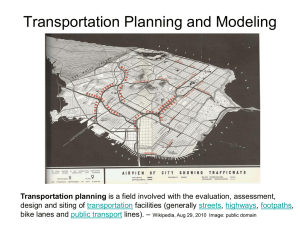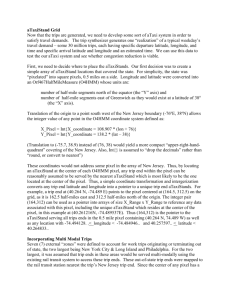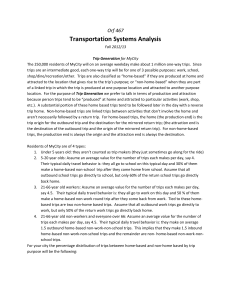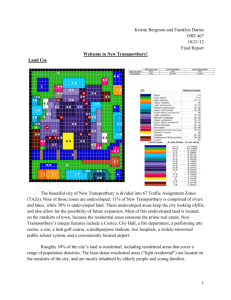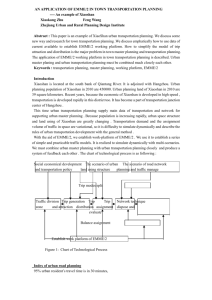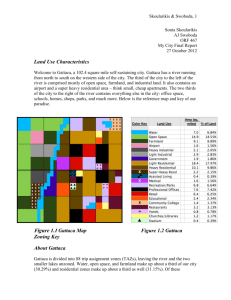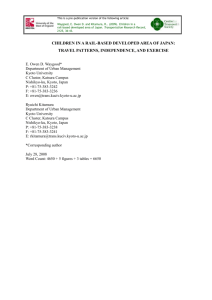Practice Questions for ECO 380:
advertisement
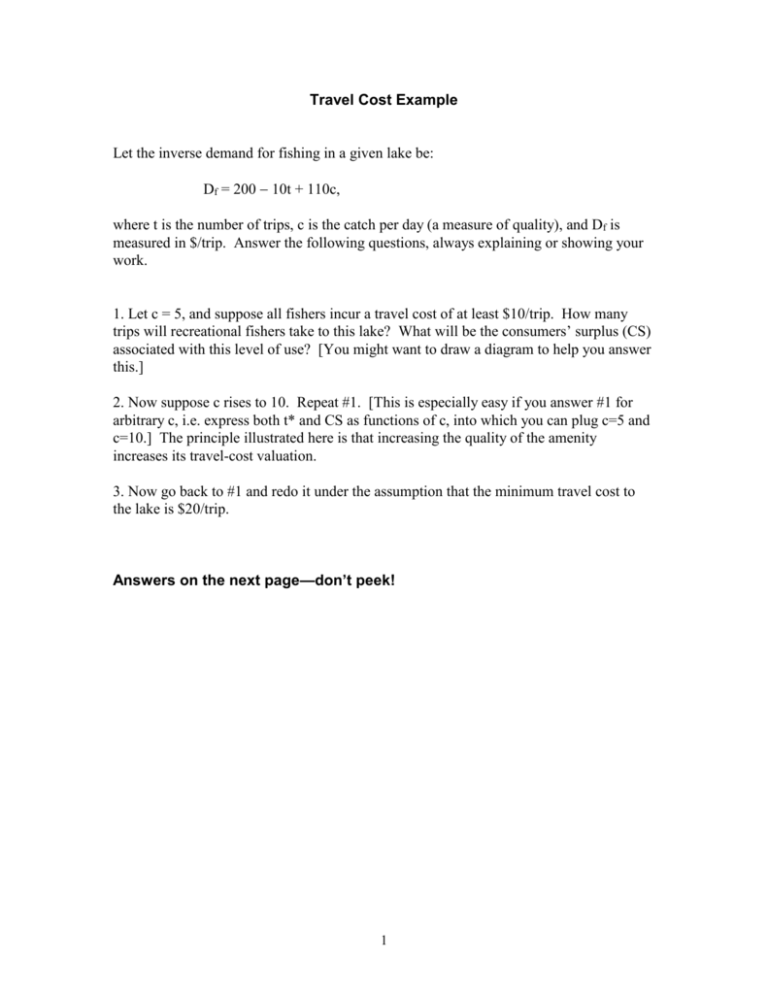
Travel Cost Example Let the inverse demand for fishing in a given lake be: Df = 200 10t + 110c, where t is the number of trips, c is the catch per day (a measure of quality), and Df is measured in $/trip. Answer the following questions, always explaining or showing your work. 1. Let c = 5, and suppose all fishers incur a travel cost of at least $10/trip. How many trips will recreational fishers take to this lake? What will be the consumers’ surplus (CS) associated with this level of use? [You might want to draw a diagram to help you answer this.] 2. Now suppose c rises to 10. Repeat #1. [This is especially easy if you answer #1 for arbitrary c, i.e. express both t* and CS as functions of c, into which you can plug c=5 and c=10.] The principle illustrated here is that increasing the quality of the amenity increases its travel-cost valuation. 3. Now go back to #1 and redo it under the assumption that the minimum travel cost to the lake is $20/trip. Answers on the next page—don’t peek! 1 Answers: 1. I don’t have time to draw a picture, so we’ll just have to wing it without one. For me, the easiest way to do this is to solve the problem in its most general form, and then just plug in numbers as needed. So I’ll solve it for arbitrary c (quality) and p (minimum travel cost). So start out by setting p = 200 10t + 110c and solving for t. 10t = 200 + 110c p t* = 20 + 11c p/10 Df is the inverse demand function, but this is the actual demand function: give me a price and I’ll return a quantity. Now, for CS, we have to imagine a triangle whose base is t* and whose height stretches from p at the bottom, up to the vertical intercept of Df, 200 + 110c at the top. Therefore, CS = ½bh = ½ (20 + 11c p/10) (200 + 110c p) = ½ 10t*2 = 5t*2 So for c = 5 and p = $10/trip, t* = 20 + (11)(5) (10/10) = 20 + 55 – 1 = 74 trips CS = 5 (74)2 = $27,380 2. Now c = 10: t* = 20 + (11)(10) (10/10) = 20 + 110 – 1 = 129 trips CS = 5 (129)2 = $83,205 Improving the quality of the lake increases its value to recreationists, as well as the number of trips they want to take there. 3. Now c = 5 again, but p = 10: t* = 20 + (11)(5) (20/10) = 20 + 55 – 2 = 73 trips CS = 5 (73)2 = $26,645 As compared to the initial situation, raising the minimum travel cost reduces both the number of trips and the value of the amenity to recreationists. But it doesn’t reduce it by much. This makes sense if you compare the $10/trip change in minimum travel cost to the vertical intercept of inverse demand Df, which is 200 + 110(5) = $750/trip when c = 5. 2


